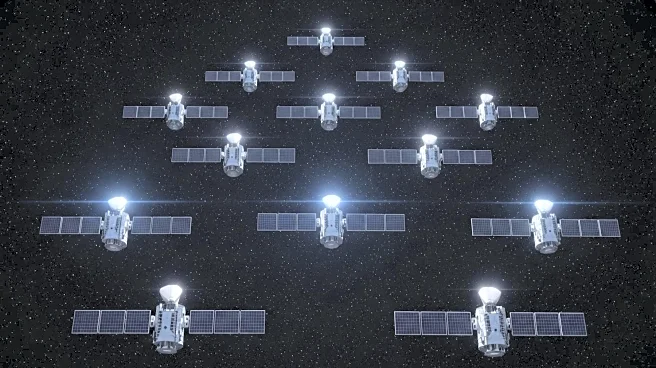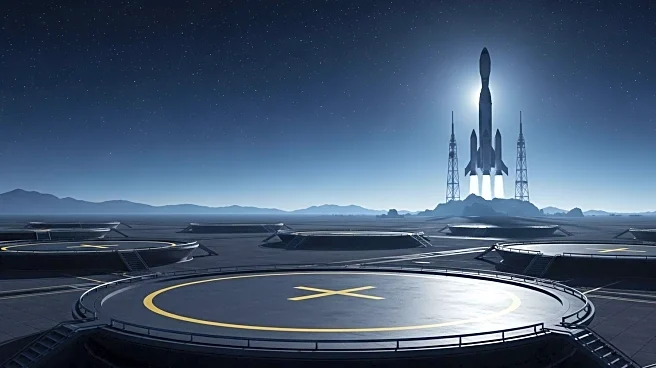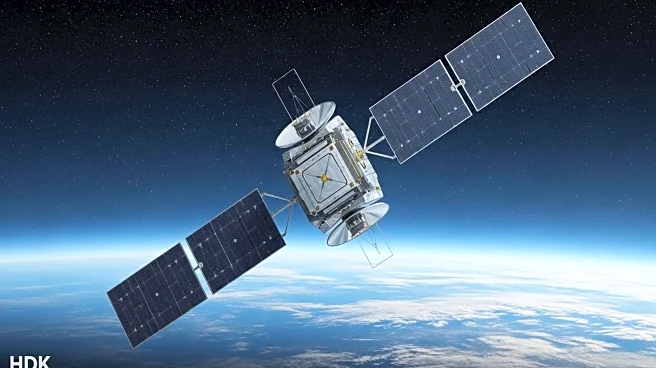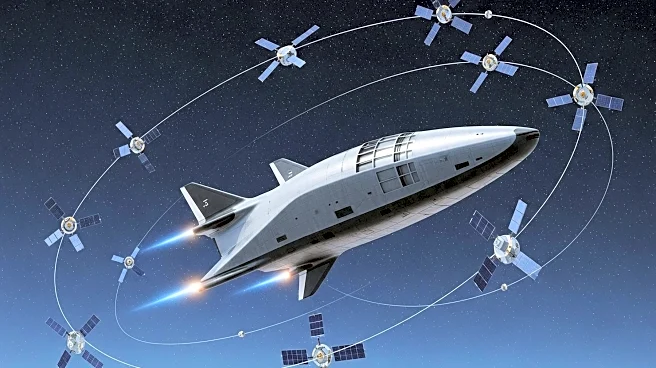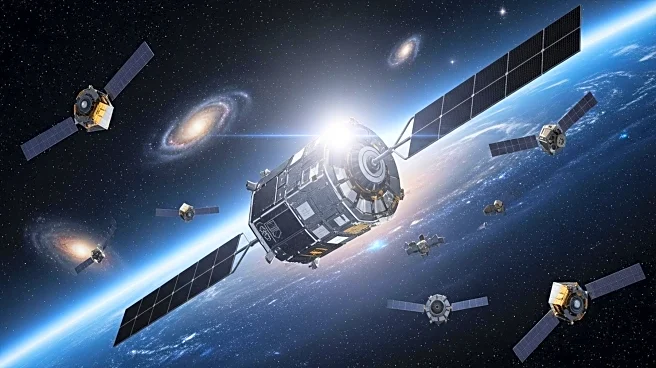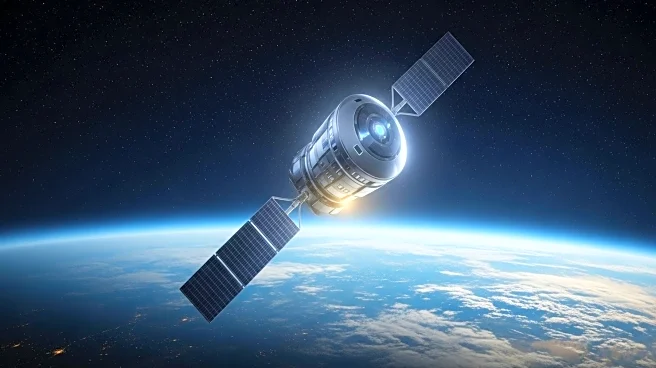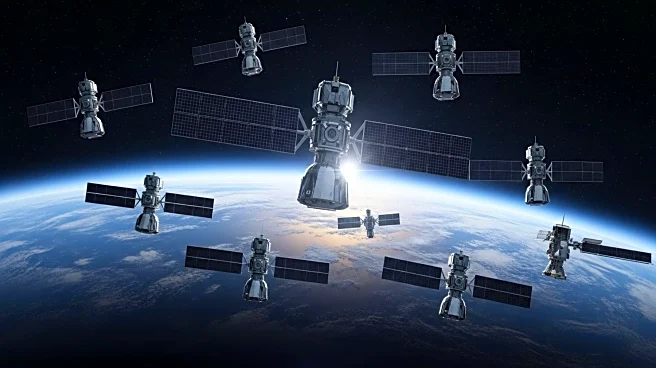What's Happening?
SpaceX successfully launched 28 Starlink satellites into low Earth orbit on September 5, 2025, using a Falcon 9 rocket from Kennedy Space Center in Florida. The launch is part of SpaceX's ongoing efforts to expand its commercial internet broadcast network. The Falcon 9 rocket completed its initial ascent in under nine minutes, followed by a 45-minute coast. The satellites were scheduled to be deployed from the rocket's second stage approximately one hour and four minutes after liftoff. This mission marked the 463rd reuse of a Falcon 9 first stage and the 499th successful recovery for SpaceX. The Starlink megaconstellation now includes over 8,370 active satellites.
Why It's Important?
The expansion of SpaceX's Starlink network is significant for global internet connectivity, particularly in remote and underserved areas. By increasing the number of satellites in orbit, SpaceX aims to provide faster and more reliable internet services worldwide. This development is crucial for bridging the digital divide and enhancing communication infrastructure. Additionally, the successful reuse of Falcon 9 rockets demonstrates SpaceX's commitment to cost-effective and sustainable space exploration, potentially reducing launch costs and increasing accessibility to space for various stakeholders.
What's Next?
SpaceX plans to continue its aggressive launch schedule, with more Starlink satellites expected to be deployed in the coming months. The company is also working on expanding its launch capabilities and infrastructure to support future missions. As the Starlink network grows, SpaceX will likely focus on improving service quality and expanding coverage areas. The ongoing development of reusable rocket technology may lead to further advancements in space exploration and commercial satellite deployment.
